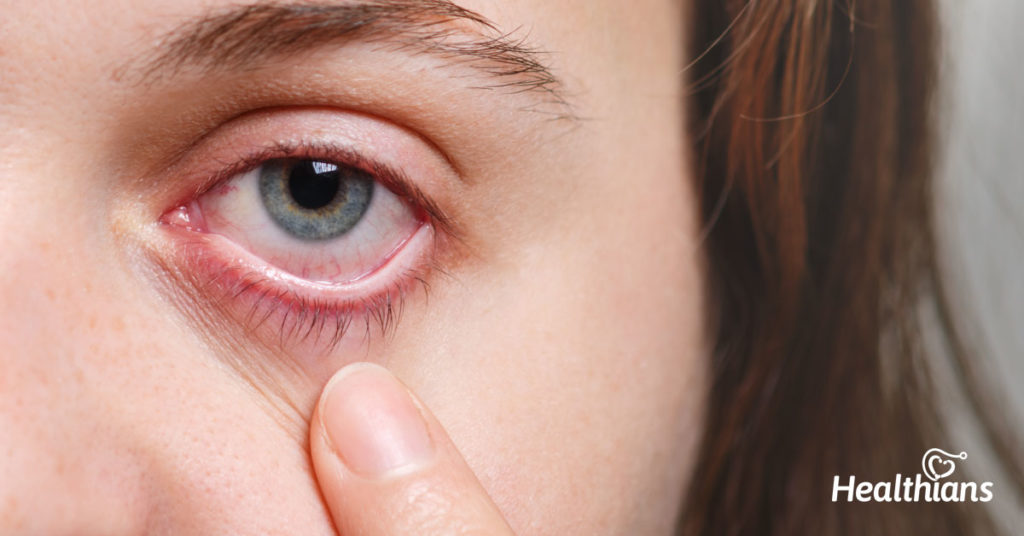Introduction
A stye (sometimes spelt sty) is a small, red, painful bump that appears on the eyelid. Also known as a hordeolum, it is caused by an infection of the oil glands infecting an eyelash follicle or eyelid gland.
It is a common problem that can occur on the inside or outside of the eyelid. It typically does not require medical care and will normally go away on its own within a week. It can be treated at home with warm compresses, but in rare cases, it may require medical attention.
In this blog, we will look at some of the symptoms, and causes as well as self-care tips to avoid reoccurrence from time to time.
Also read: Some Common Eye Make-up Problems and their Prevention
Symptoms of Stye
The symptoms of a stye may include:
· A small, red bump on the eyelid, similar to a boil or a pimple
· Swelling of the eyelid
· Tenderness in the affected area
· Pain in or around the eye
· Sensitivity to light
· Blurred vision
· Discomfort when blinking
· Crusting along the eyelid margin
· Watery eyes
· A scratchy sensation in the eye, as if there is a foreign body in the eye.
Depending on the size and location of the stye, the intensity of these symptoms can change.
If you have any of these symptoms, it is best to contact an eye doctor for a precise diagnosis and the best course of action because some of these symptoms can also be found in other eye disorders.
Also read: 5 ways to reduce eye strain and keep your eyes healthy
Causes of Stye
Styes are often caused by the bacteria, Staphylococcus. This bacterium is normally present on the skin, but when it gets into the oil glands in the eyelid, it can cause an infection.
Other factors that can increase your chances of getting a stye include:
- Poor hygiene: Failure to maintain proper eye and eyelid hygiene can increase the risk of a bacterial infection.
- Contact lenses: Wearing contact lenses for extended periods of time, or not properly cleaning them, can increase the risk of a stye.
- Blepharitis: This is an inflammation of the eyelids that can block the oil glands and increase the risk of a stye.
- Hormonal changes: Fluctuations in hormones can increase the risk of styes, especially in women.
- Stress: Stress can weaken the immune system and make it more difficult for the body to fight off infections.
- Poor nutrition: A diet lacking essential vitamins and minerals can weaken the immune system and increase the risk of infections.
- Rubbing eyes: Frequent rubbing of the eyes can irritate the eyelids and increase the risk of infection.
Do’s and Don’ts
If you have a stye in your eye, here are some things you should and shouldn’t do:
Dos:
- To relieve pain and swelling, apply warm compresses to the affected eye for 5 to 10 minutes, several times a day.
- Keep the affected area clean by washing it gently with mild soap and water.
- Take over-the-counter pain relievers to help relieve pain and reduce swelling.
- Practice good hygiene by washing your hands frequently.
- Consider seeing a doctor if the stye does not improve after a few days or becomes more severe.
Don’ts:
- Don’t squeeze or pop the stye, as this can cause the infection to spread and potentially lead to more serious complications.
- Don’t wear eye makeup until the stye has healed, as this can further irritate the area and increase the risk of infection.
- Don’t wear contact lenses until the stye has healed.
- Don’t share towels or other personal items with others, as this can increase the risk of spreading the infection.
- Don’t rub or touch the affected eye, as this can further irritate the area and increase the risk of infection.
Final thoughts
It is crucial to maintain proper cleanliness and refrain from sharing personal objects if you have a stye. Get medical help if the stye is severe or does not go away with self-care measures.
Styes may occasionally require medical attention, such as draining of the affected region or the administration of prescription drugs.
To stop the virus from spreading, always remember to wash your hands before eating and after using the restroom. Most people with styes can expect a full recovery without any long-term effects with the right care and therapy.





